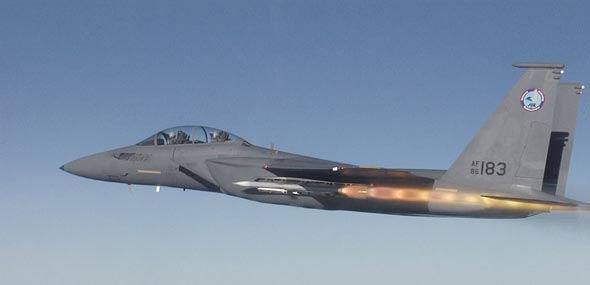
The South Korean defense acquisition program administration (DAPA) has indicated this week that the bidding process for the 8.3 trillion won (US$7.2 billion) program buying 60 new fighter aircraft has finally got to a conclusion. A single finalist, likely to be the Boeing Company remained in the race. With a single option now on the table offered at the right price, DAPA is expected to conduct further assessment and announce its final decision in mid-September. Boeing said it was still waiting to hear the outcome of the competition. Lockheed Martin also said it has not received an official notification from the Republic of Korea regarding the results of the price bidding for the F-X Program. Company officials said the decision is not determined on cost alone, and aircraft capabilities will also be considered in the month long evaluation process that will now proceed. “The F-X source selection process has multiple phases and we will continue to work closely with the U.S. government as they offer the F-35 to Korea,” Reuters quoted Lockheed Martin sources comment. The United States has proposed the fighter planes to Seoul under a government-to-government basis, through the ‘foreign military sales’ channel, with companies providing information on price and other details.
Seoul initially planned to pick a bidder by October 2012, with the goal of receiving the first delivery in December 2016. However, due to the extended process it is likely that the first batch of fighters will be shipped in August 2017. These new fighters will replace the remaining airplanes of a fleet of some 150 F-4Es and F-5E/Fs the Republic of Korea Air Force (RoKAF) has been operating for five decades. These aircraft are nearing the end of their operational lives and will have to be withdrawn from service around 2015.
Earlier it was reported that the European Aeronautic Defense and Space Company (EADS) has been eliminated from the selection, after ‘abruptly changing its contractual terms’. EADS submitted an offer for 54 single seater and six twin-seat Eurofighter Tranche 3 fighters, while DAPA required 15 twin-seat and 45 single seat planes. South Korea’s decision to eliminate EADS and the fact that the costlier F-35A is available only in a single-seat version has left left Boeing’s F-15 Silent Eagle as the sole final candidate, government sources said Sunday.
Lockheed Martin was also one of three bidders, offering the F-35 which is available only in a single seat variant. In addition to the lack of twin-seat configuration, the F-35A was said to be costlier than the F-15SE or Typhoon Tranch 3. Throughout the bidding process Seoul insisted not to exceed its target cost, thus repeating bidding sessions 55 times.

















